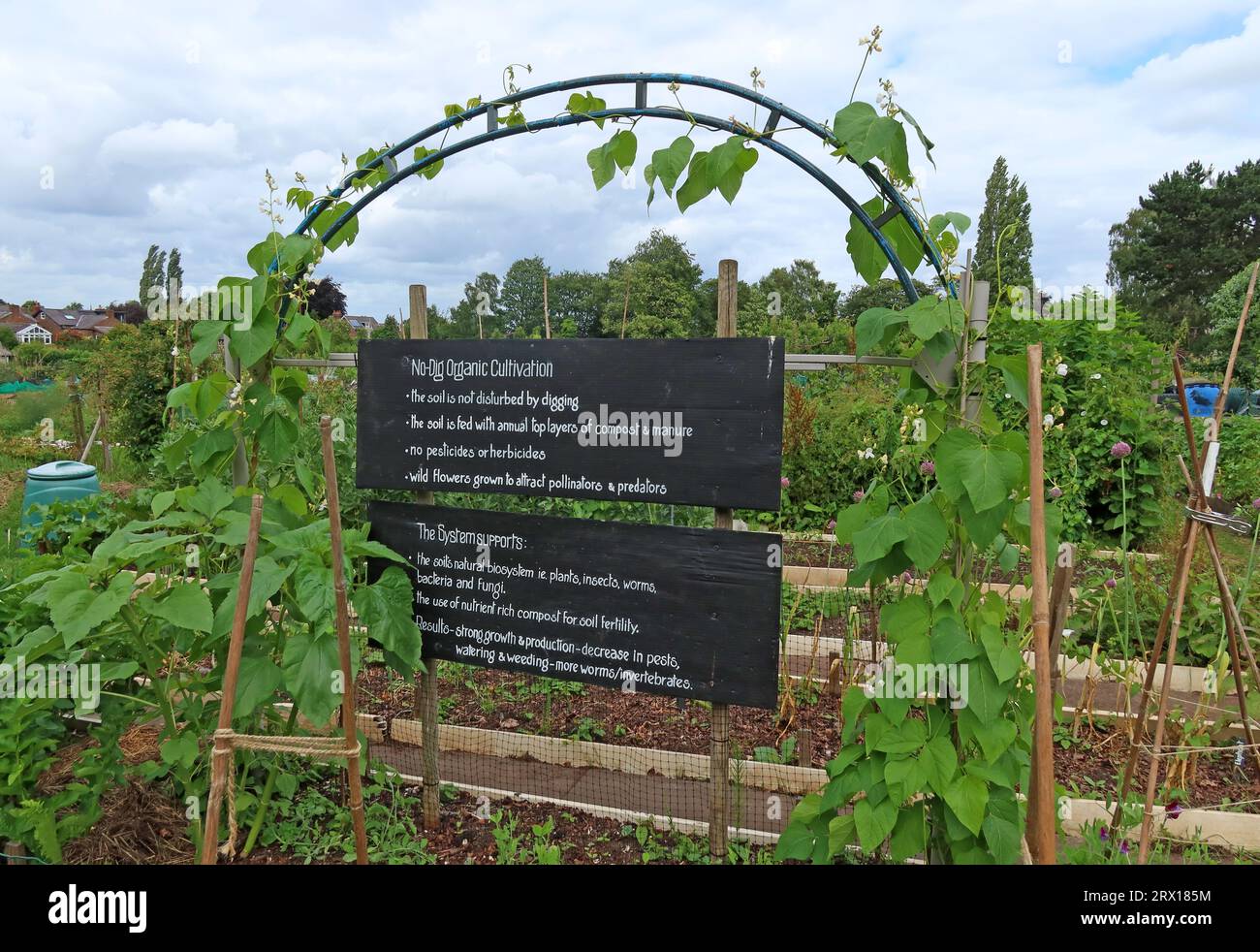No dig cultivation sign - allotments in Red Lane, Stockton Heath, Warrington, Cheshire, England, UK, WA4 5AD

Image details
Contributor:
Tony Smith / Alamy Stock PhotoImage ID:
2RX185MFile size:
55.5 MB (2.4 MB Compressed download)Releases:
Model - no | Property - noDo I need a release?Dimensions:
5316 x 3648 px | 45 x 30.9 cm | 17.7 x 12.2 inches | 300dpiDate taken:
2 July 2023Location:
Red Lane, Stockton Heath, Warrington, Cheshire, England, UK, WA4 5ADMore information:
No-dig gardening is a non-cultivation method used by some organic gardeners. The origins of no-dig gardening are unclear, and may be based on pre-industrial or nineteenth-century farming techniques. Masanobu Fukuoka started his pioneering research work in this domain in 1938, and began publishing in the 1970s his Fukuokan philosophy of "do-nothing farming" or natural farming, which is now acknowledged by some as the tap root of the permaculture movement. Two pioneers of the method in the twentieth century included F. C. King, Head Gardener at Levens Hall, South Westmorland, in the Lake District of England, who wrote the book "Is Digging Necessary?" in 1946, and a gardener from Middlecliffe in the UK, A. Guest, who in 1948 published the book "Gardening Without Digging". The work of these gardeners was supported by the Good Gardeners Association in the UK. No-dig gardening was also promoted by Australian Esther Deans in the 1970s, and American gardener Ruth Stout advocated a "permanent" garden mulching technique in Gardening Without Work and no-dig methods in the 1950s and 1960s. This technique recognizes that micro- and macro-biotic organisms constitute a "food web" community in the soil, necessary for the healthy cycling of nutrients and prevention of problematic organisms and diseases. The plants transfer a portion of the carbon energy they produce to the soil, and microbes that benefit from this energy in turn convert available organic substances in the soil to the mineral components the plants need to thrive